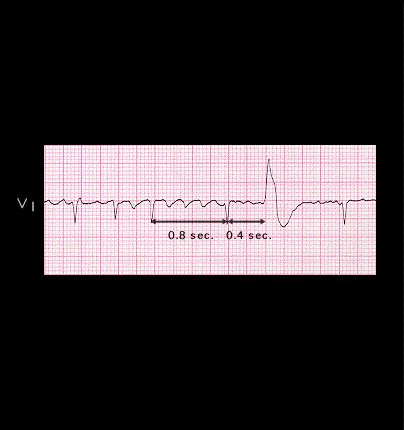
Sometimes it is difficult to know whether wide complex beats occurring in the setting of atrial fibrillation or flutter are supraventicular and conducted aberrantly, or are ventricular premature beats. This strip of lead V1 shows atrial fibrillation and a wide complex beat that satisfies the criteria for aberrant conduction. It appears in a beat with a short preceding cycle length (0.40 seconds), is preceded by a beat with a longer preceding cycle length (0,80) seconds and has a right bundle branch block configuration. However, this wide complex beat could also be a ventricular premature beat.
